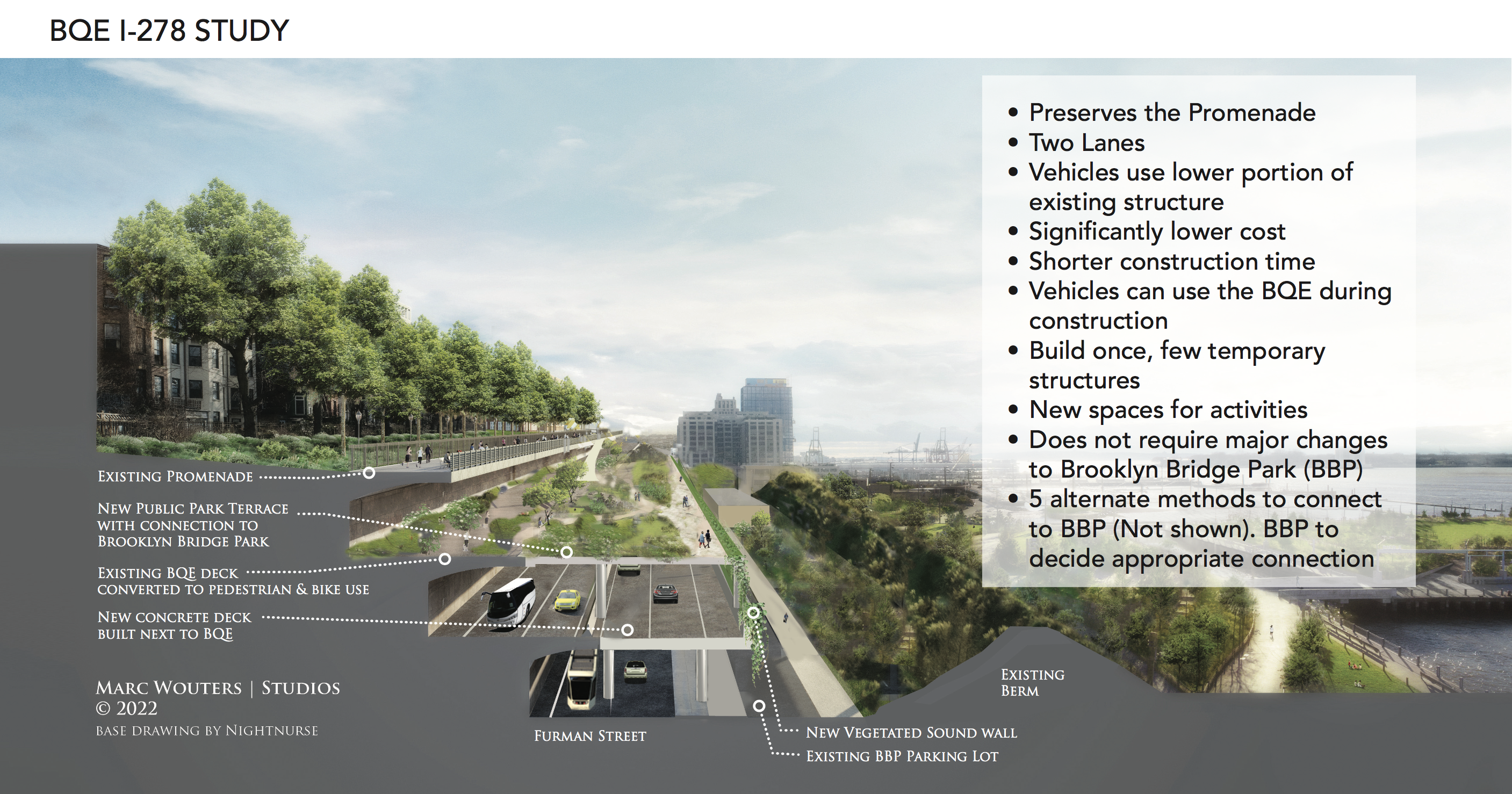Here’s another look at the BQE’s ‘Stoop’ design plan

Marc Wouters Studios Stoop Method Crossection 20230226 Brooklyn’s Marc Wouters Studios rendering of The Stoop design. Rendering courtesy of Marc Wouters Studios
BROOKLYN HEIGHTS — The New York City Department of Transportation is set to present on Tuesday night another round of design ideas to reconstruct the deteriorating 1.5-mile Triple Cantilever section of the Brooklyn-Queens Expressway (BQE Central).
One of the preliminary plans unveiled in December, dubbed “The Stoop” by DOT, is similar to a plan developed by Brooklyn’s Marc Wouters Studios, according to designer Wouters, who has continued to work on the design.
“I started back on this concept back in 2018-2019 and presented to the Mayor’s Expert panel in 2019. The early version of the concept was shown to DOT staff in 2019 and was featured in national publications,” Wouters told the Brooklyn Eagle.